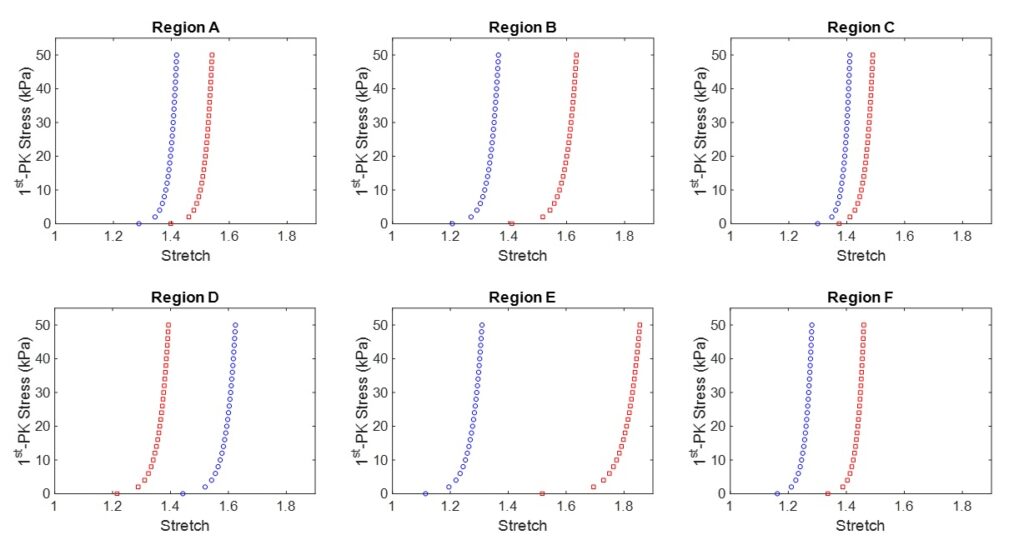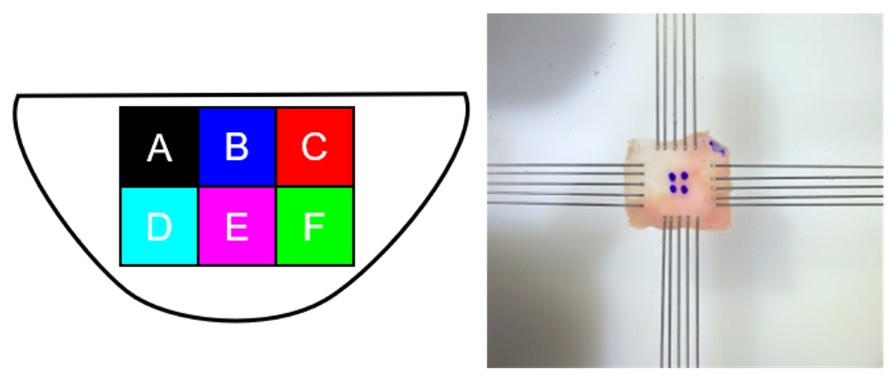Heart valve disease is a debilitating disease that affects millions of people. It occurs when one or more of the four valves in the heart does not open or close properly. Mechanical characterization of heart valve leaflets is critical for improving therapeutic options for valvular disease. Many attempts at characterization focus on the mechanical properties of the central region and neglect spatial variation in the tissue’s properties. Dr Lee and his team at the University of Oklahoma have utilized the CellScale BioTester to mechanically characterize six distinct regions in heart valve leaflet tissues. Specifically, they have determined that anisotropy and peak stretch vary between regions and that these variations are important for proper leaflet health and function.
Experimenting on both porcine mitral valve and tricuspid valve anterior leaflets, it was discovered that (i) central regions of the leaflet were more anisotropic than edge regions, (ii) the mitral valve anterior leaflet extended more closer to the perimeter, and (iii) mitral valve leaflet tissue regions exhibited a greater decay than tricuspid valve regions in stress-relaxation behavior. Results plotted of the Stress against Stretch for each of the 6 regions are shown below.


Read the full journal article here: https://doi.org/10.1016/j.jbiomech.2018.11.015
Read all other publications here: https://www.cellscale.com/publications/
Read about another user publication highlight (3D bioprinting of human tissue with dECM) here.








